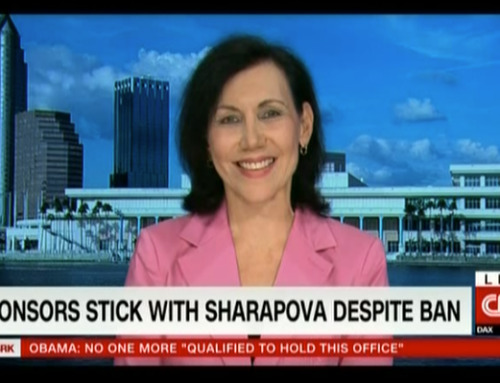Practical Imagination Enterprises
Laurie has a passion for innovation and more than twenty years of experience as a creative catalyst. A pioneer in applied creative problem solving and strategic innovation, Laurie has led case teams to create compelling product ideas and strategies in industries such as: foods, health care, consumer products, financial services, telecommunications and others. She was a co-founder and Director of Consulting for IdeaScope, a global innovation management consulting firm with 25 consultants where she headed a landmark study on the practice of innovation in Fortune 1000 companies.
Being a creative catalyst is part of my DNA and the belief that anything is possible. In college, I had a T-shirt that said, “all things are possible” spread the word.” I really do believe that we all have the ability to come up with creative solutions. As children we are naturally curious and great creative problem solvers. Education, socialization and institutions may try to channel us into constricted thinking. My role is to help people get back in touch with their playful, experimental selves, to give them permission to think big.
I’ve been an entrepreneur for over twenty years and I work in several core areas. In strategic innovation sessions I help clients envision the future and devise appropriate business responses. I also work extensively in many phases of the new product development cycle. I do this with people from different functions and areas of expertise from client organizations and also with consumers or customers in qualitative research sessions.
In short, my role as creative catalyst is to facilitate, inspire and orchestrate the right conditions for individuals and teams to do imaginative and productive thinking together.
You mentioned qualitative research. Could you explain what that entails?
To be a qualitative researcher you have to like people and respect the way they see things. Most of what I do is hold conversations with small groups to find out what’s on their minds, what’s hot, what isn’t, what their attitudes, perceptions or behaviors or usage of products or services are like. Through these discussions we uncover needs and opportunities to make products and services that will be more relevant and valuable to people.
The experience is so exciting and eye opening. Qualitative research allows us to gain a window into people’s emotions, routines, rituals, behaviors and lifestyles. This can provide unique insights and ignite ideas for new products, innovative solutions and trends.
Companies often engage you to discover the Next Big Thing for them, or a way to tap into a trend. Do you have a process that you can share with our readers?
The first step is to communicate with the client and uncover what their goals are. Meeting with significant parties involved and clarifying the mission is crucial. Sometimes within the same organization, there may be several sets of goals. Next, we assemble the best team for the task people with the depth of knowledge and expertise from within an organization and often others from outside the company. Choosing external experts that may be seemingly unrelated can provide terrific, fresh new perspectives to solving problems and creating solutions. Once the team is in place, we create pre-ideating session homework which may include anything from internet or blog browsing to photo-journaling.
Selecting the environment for the brainstorming session is crucial for results. An ideal location is one that opens up, promotes and is incorporated into imaginative thinking. Interesting settings such as a B&B, a science museum, an art gallery, places with lots of open space, natural light and creative stimulation. The sessions may span several days.
Big themes and ideas are captured and then honed into detailed concepts. Ideas are subsequently researched and tested with consumers. It’s a building process; we often work with clients on multiple facets of a project from conceptualization to market.
You mentioned involving external team members with varied backgrounds. Is there a lesson in here for our readers?
Absolutely. It is normal to develop tunnel vision and a routine way of thinking. By becoming involved in activities, hobbies or interests that are outside of our norms, our thinking will open up and we may be more cognizant of trends that are developing. I constantly draw from my two passions, music and creative cooking to solve problems, look for trends and create new product ideas.
What has surprised you most in your twenty plus years of developing new products?
How long it takes for behemoth organizations to understand and to act on forces giving shape to consumer cultures. Trends that some have seen for a long time coming are just starting to be commercially addressed. For example, in the 1980s there was significant interest in organic and healthier food. Yet only within the last five to ten years have major food companies started to take note, develop responsive products, and meet needs. A significant part of the population wants healthier food and meeting their desires is good business.
Are there particular trends that you watch, and our readers might find interesting?
What used to be called “The Graying of America” is now “The aging Baby Boomers.” They are unlike previous generations of seniors. There is a blurring of ages where 60 is the new 40. Baby boomers are acting and looking younger, having second careers, finding dream jobs and going on adventures. Most companies aren’t getting it–or they are still responding to old stereotypes. There is a handful that are creating emotional connection to this group and tapping into their energy.
Another trend area is food, health and wellness. It is interesting to watch trends and countertrends of how people care for themselves. There is a group that wants healthier food, remains active and monitors their health. On the opposite end of the spectrum are facts that show the deteriorating health and wellness of America’s youth. Occurrence of Type 2 diabetes is on the rise and an increasing number of young people lead sedentary lives and have unhealthy lifestyles and diets. It will be interesting to watch large food companies address this trend and to see whether commercial food companies’ products and messaging change.
She is an author of several articles on innovation and qualitative research; has been a guest lecturer at many business schools, including Harvard, MIT, Babson, and Northeastern, and is a frequent presenter at industry conferences, including the QRCA and the Institute for International Research. She also wrote “Creating the Creative Cook: An almost vegetarian cookbook for almost brave cooks!”
Contact:
Practical Imagination Enterprises,
18 Losey Road
Ringoes, NJ 08551
908.237.2246
www.practical-imagination.com





